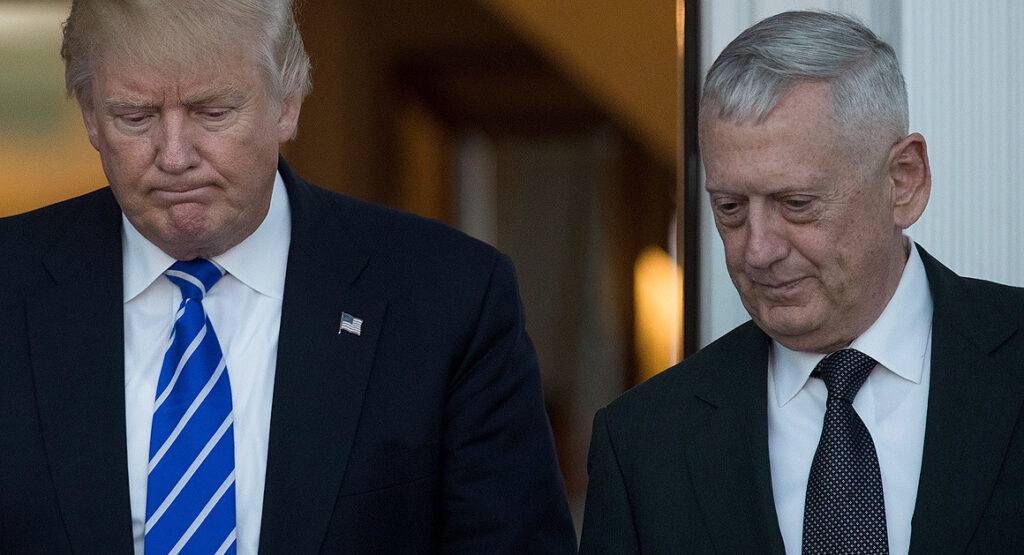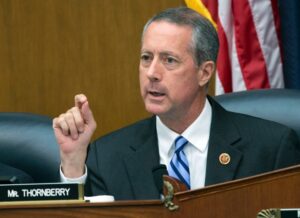McCain, Thornberry Decry Trump Pentagon Budget Boost
Posted on

President Trump and Defense Secretary Jim Mattis
WASHINGTON: President Donald Trump is pledging “an historic increase in defense spending” of $54 billion to $603 billion for the fiscal 2018 budget, but neither Congressional Republicans nor defense budgets experts were very impressed at first glance.
“Such a budget request would represent an increase of $18.5 billion above the level proposed by President Obama for fiscal year 2018. In other words, President Trump intends to submit a defense budget that is a mere three percent above President Obama’s defense budget, which has left our military underfunded, undersized, and unready to confront threats to our national security,” Sen. John McCain, chairman of the Senate Armed Services Committee, says in a statement.
McCain said he and the chairman of the House Armed Services Committee, Mac Thornberry, believe we should substantially spend more. They “agree,” McCain says, “a defense budget of $640 billion is required in fiscal year 2018 as a first step toward restoring military readiness, rebuilding our military, and reshaping our forces for the realities of 21st century warfare. With a world on fire, America cannot secure peace through strength with just three percent more than President Obama’s budget. We can and must do better.”

Rep. Mac Thornberry
Thornberry wasn’t quite as vivid, but he agreed with McCain. “Over the course of the Obama Administration, our military funding was cut 20 percent while the world grew more dangerous. While we cannot repair all of the damage done by those cuts in a single year, we can and should do more than this level of funding will allow,” Thornberry said in his statement.
The reaction from budget experts was cautious. “If the increases in defense are paid for by cuts in non-defense, then I think this proposal is more symbolic than anything,” Todd Harrison of the Center for Strategic and International Studies tells us in an email.
Mackenzie Eaglen, defense budget expert at the American Enterprise Institute, was skeptical as well. “It looks a lot bigger than it will ultimately be. That’s because the budget as is (with non-defense pay-fors) cannot pass Congress so the ultimate number will likely be negotiated downward,” she says, Eaglen has predicted that Trump will ultimately pay for his defense build-up, not with domestic spending cuts, but with Reaganeseque budget deficits.
But cutting non-defense budgets is exactly what Trump plans to do. Among the places he plans to cut is the foreign aid budget and the State Department, a huge shift from the days when former Defense Secretary Bob Gates said he’d willingly shift some of his budget to the State Department because it was so important. In fact, there was immediate reaction from an impressive array of recently retired four- and three-star generals, decrying the intention to slice the State and aid budgets.
“The State Department, USAID, Millennium Challenge Corporation, Peace Corps and other development agencies are critical to preventing conflict and reducing the need to put our men and women in uniform in harm’s way. As Secretary James Mattis said while Commander of U.S. Central Command, ‘If you don’t fully fund the State Department, then I need to buy more ammunition.’ The military will lead the fight against terrorism on the battlefield, but it needs strong civilian partners in the battle against the drivers of extremism– lack of opportunity, insecurity, injustice, and hopelessness,” says a letter signed by more than 120 retired generals and admirals. The letter was released under the rubric of the U.S. Global Leadership Coalition.
“This budget will be a public safety and national security budget,” Trump told governors assembled today for the National Governors Association’s annual meeting with the president. “It will include an historic increase in defense spending to rebuild the depleted military of the United States of America at a time we most need it.”
Because Trump plans to cut large pieces from other departments, Harrison characterized this budget proposal as “a starting point in the negotiations with Congress. There are several other big questions that need to be answered, the most important one is what are they doing with the OCO budget? Right now DoD has about $30B per year of base budget funding tucked into the OCO budget. If the Trump budget moves some or all of that back into the base budget, then it is not really a $54B increase.”
Harrison also notes that the Obama administration had called for a $33 billion increase in the base national defense budget for fiscal 2018, “so Trump is only $21B above that.”
So it’s certainly a proposed increase, but this is only the very beginning of what I’m betting will become a knock-down, drag-out fight between the Congress and Trump, within Congress between fiscal hawks and defense hawks and between Democrats and Republicans. Then, of course, there will be the crucial battle between the Senate and the House. And then there’s the old chestnut — will the Budget Control Act be repealed? We’re just getting started.
Subscribe to our newsletter
Promotions, new products and sales. Directly to your inbox.
